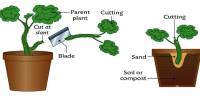You’d expect that the rich flavor of a high-quality cup of tea would be mostly determined by the tea kinds utilized. However, a study published in the journal Current Biology reveals that another crucial ingredient in the preparation of a wonderful cup of tea is a group of bacteria discovered on tea roots. By modifying that assemblage, the authors demonstrated that they could improve on already high-quality tea.
“Significant disparities in microbial communities, particularly nitrogen metabolism-related microorganisms, were identified in the roots of tea plants with varying qualities through microbiomics,” says Tongda Xu of Fujian Agriculture and Forestry University in Fujian, China. “Crucially, through the isolation and assembly of a synthetic microbial community from high-quality tea plant roots, we managed to notably enhance the amino acid content in various tea plant varieties, resulting in an improvement in tea quality.”
China has an abundance of genetic resources for cultivating tea plants. However, according to the researchers, using molecular genetic breeding procedures to improve tea quality is tough. There is interest in exploring new ways to modify and improve tea, including the use of microbial agents. Earlier research found that soil bacteria living in plant roots influence how nutrients are absorbed and used by plants. In the latest study, the researchers hoped to understand more about how root bacteria affect tea quality particularly.
Significant disparities in microbial communities, particularly nitrogen metabolism-related microorganisms, were identified in the roots of tea plants with varying qualities through microbiomics.
Tongda Xu
They discovered that the microorganisms in tea roots regulated their ammonia intake, which in turn influenced the creation of theanine, which is essential for determining a tea’s flavor. They also noticed differences in the microorganisms colonizing various teas. By comparing tea kinds with varying levels of theanine, scientists discovered a group of microorganisms that appeared promising for modifying nitrogen metabolism and increasing theanine levels.
They then created a synthetic microbial community known as SynCom, which closely resembled the one observed in connection with a high-theanine tea called Rougui. When they applied SynCom to tea roots, they discovered that theanine levels increased. The bacteria also improved the ability of Arabidopsis thaliana, a plant typically utilized in basic biological research, to endure low nitrogen levels.
“The initial expectation for the synthetic microbial community derived from high-quality tea plant roots was to enhance the quality of low-quality tea plants,” says study co-author Wenxin Tang. “However, to our astonishment, we discovered that the synthetic microbial community not only enhances the quality of low-quality tea plants but also exerts a significant promoting effect on certain high-quality tea varieties. Furthermore, this effect is particularly pronounced in low-nitrogen soil conditions.”

The findings suggest that synthetically produced microbial communities could improve teas, especially when grown in nitrogen-deficient soil conditions, they say. Because tea trees require lots of nitrogen, the discovery could help to reduce the use of chemical fertilizers while promoting the quality of tea trees. The findings may have important implications for agricultural crops more broadly.
“Based on our current experimental findings, the inclusion of the SynCom21 microbial community has not only improved the absorption of ammonium nitrogen in different tea varieties but also enhanced the uptake of ammonium nitrogen in Arabidopsis thaliana,” explains Xu. “This suggests that the ammonium nitrogen uptake-promoting function of SynCom21 may be applicable to various plants, including other crops.”
For example, they claim that it may enable for the cultivation of rice with improved attributes, such as higher protein content. They intend to further refine SynCom and evaluate its utilization in field testing. They also want to know more about how root bacteria influence other secondary metabolites in tea trees.
















